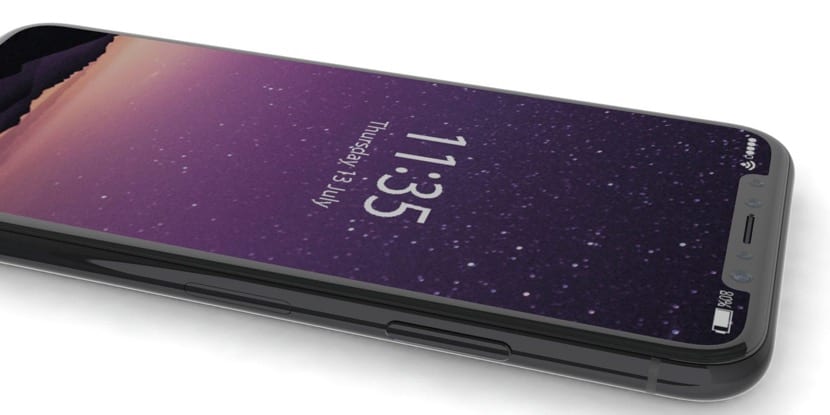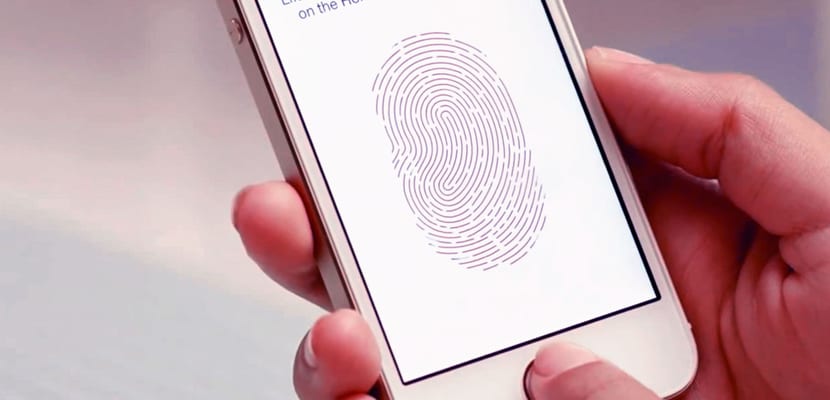
It has been the most difficult point since the rumors began about the new iPhone 8. We all wanted an iPhone whose front was all screen, to be able to enjoy a device with a screen like the iPhone 7 Plus but with a total size comparable to that of the iPhone 7. This seems like the perfect match for most: those who don't want a larger device and those who don't want a smaller screen are content with just one model. But this comes at a price: where do I put the Touch ID?
Ahead, behind, on one side, integrated under the screen ... the turns we have given to the possible location of the Touch ID have been many, I would say that all possible, so that in the end Apple arrives, as almost always, And do the unexpected: remove Touch ID. The decision that at first seemed too implausible to be a reality right now is the one that has the most force, and has gotten more verisimilitude as we have learned how the new facial recognition system of the iPhone 8 will work.
Fast, safe and accurate
Touch ID has convinced us all and has become an essential element of the iPhone after four generations, until reaching the point where it is difficult for us to conceive an iPhone without the fingerprint sensor. Much more evolved than the first Touch ID of the iPhone 5s, the current sensor is fast, it is very precise but also undemanding with the position of the finger on the button, and above all it has proven to be safe, to the point that all competing manufacturers already use it on their devices and it has become the preferred identification method for mobile payments.

The Touch ID has become such a beloved element that we have come to assume that the security of our device depends exclusively on it, and the reality is not that. There are many other security methods that have been tried with greater or lesser success, from the iris scanner to facial recognition, to give two fairly common examples. The problem is that so far none has proven to work as well as Apple's Touch ID. We have seen news of how a simple photograph can circumvent any of these security systems, putting its reliability in doubt, or rather, dragging it across the ground.
But something similar happened with fingerprint sensors until Apple began using them on the iPhone. Any of you will remember the fingerprint sensors that some laptops had and that made their owners desperate that they had to repeat over and over again the swipe gesture until they got it to work. From then until now, this type of security mechanism has evolved to the point that the simple contact with the start button of our iPhone allows us to unlock the terminal.
A comparable system to forget the Touch ID
The only thing we need to immediately forget about Touch ID when we pick up our iPhone 8 is a system that is at least as accurate, fast and secure. And according to those who have information from within the company, the new facial recognition system of the iPhone 8 meets these requirements.. It is not a simple camera that captures your face and that can therefore be mocked with a photo, or that it will not recognize you for wearing sunglasses, or that it will take several seconds to scan your face in order to unlock the terminal.
According to Bloomberg, which claims to have very reliable sources within the company, the facial scanner will work even with objects placed on the face, such as glasses or a cap, it can be used with the iPhone in a horizontal position, so it can be used to pay performing the same gesture as right now, and it will recognize your face also at night or in low light, thanks to its infrared sensor. A 3D sensor will prevent a simple photo from fooling the system, and the speed is only a few milliseconds, so the waiting time will be imperceptible.
New possibilities to exploit
But also this new sensor will allow new functions that the fingerprint did not allow, or at least not in such a simple way. In the HomePod firmware we have found codes that could correspond to an option to lock the device if it detects an unrecognized face using it. How about the multi-user option that will detect who is using the device to start a different session? Let's not forget that the facial recognition system that integrates Photos has also evolved a lot and with iOS 11 it offers us synchronization through iCloud. Will we forget about Touch ID so soon? If all this is true, why not.
And of course, now with the Touch ID, putting the finger back, we confirm, for example, a purchase in the APPStore, with facial recognition, taking into account that the phone will always "see" us, that we will have to wink at it or something?
Touch ID is useful, and I find it a shame to remove it.